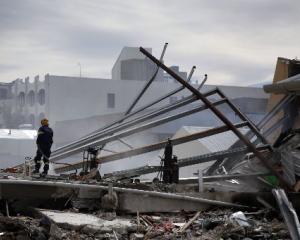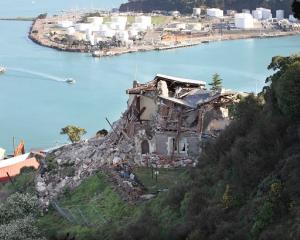The Royal Commission investigating building failures during the Christchurch quakes has urgently recommended immediate steps to strengthen about 3500 unreinforced masonry buildings throughout New Zealand.
The commission's interim report, released yesterday morning ahead of public hearings which begin next week, contains a series of recommendations "which reflect our view that urgent action is required in respect of some aspects of current building design practice, both in Christchurch and elsewhere, to make some buildings' elements (particularly stairs and floors in multistorey buildings) more resilient," commission chairman Justice Mark Cooper said.
"The Royal Commission is also of the view that immediate action is necessary to strengthen parts of unreinforced masonry buildings that could fail, causing injury or loss of life, in earthquakes that are less severe than the Canterbury earthquakes were."
The commission noted there were about 4000 unreinforced masonry (URM) buildings throughout New Zealand - possibly 500 fewer than that following the Canterbury quakes - and their collapse or partial collapse during the quakes killed 42.
The commission recommended local authorities throughout New Zealand compile or update registers of all unreinforced masonry buildings and that the buildings be improved "by bracing parapets, installing roof ties and securing external falling hazards in the vicinity of public spaces".
It also recommended additional strengthening for unreinforced masonry buildings in areas of the country deemed to have higher quake-risk profiles.
"These recommendations should be implemented as soon as practicable," the commission said.
The commission also picked up on issues raised by reports dealing with the failure of stairs and access ramps and other issues around multistorey buildings arising from the Canterbury quakes.
Those issues "need urgent attention in the context of the imminent rebuilding work in the Christchurch CBD."
The commission's recommendations included the establishment of a small group of structural engineers to draw up guidelines around those issues which could be applied during rebuilding work until national building standards were updated.
The commission also made recommendations around seismic standards, to incorporate new data about the damaging effects of vertical movements, and around geotechnical issues such as requiring thorough soils investigations to be carried out as a prerequisite of foundation design for new buildings.
Building and Construction Minister Maurice Williamson welcomed the interim report and said his department was already working on some of its recommendations.
"Work on foundation system design is under way, the department has established an engineering advisory group and is working with the sector on aspects of design standards which include new building technologies and stair design," he said.
"I have instructed the department to lead work on other areas identified by the commission including amendments to building standards which will further improve the performance of commercial buildings in severe earthquakes."
The commission's final report is due by April 11 next year.






